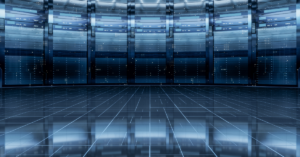A new age for plant floors is unfolding with the rising popularity of smart factories. The dawn of this Industry 4.0 staple comes as the adoption of 5G networks increases and connectivity becomes the norm. While regions of the world, including Europe and the United States right behind it, and verticals such as manufacturing, transportation and logistics are leading the charge, this trend is likely to continue spreading. Therefore, a focus on one of its main characteristics will be very important going forward. That is securing data visualization.
The Role of Data Visualization
As explained in an article published in the Journal of Manufacturing Systems, “big data analytics” is an elemental part of the Industry 4.0 design. It enhances aspects like productivity and product quality. When researchers looked at a case study of a battery module assembly system for electric vehicles, they concluded that a layered “end-to-end IoT-based big data analytics platform” was able to help carry out decision-making and management processes and using data visualization technologies boosted time efficiency. Considering these benefits, the global smart manufacturing market is expected to reach 658.41 billion USD by 2029.
Data Visualization and Security
There are many other possibilities that come with this type of data insight, including the unification of OT, IT and business goals. However, as in any discussion on the topic of Industry 4.0 and IoT innovation, there is a significant trait to address. How does data visualization connect to security concerns? Varun Taware of Dell Technologies told RTInsights that when speaking to hundreds of customers, “The topmost challenge that has been cited is security.” That’s because the addition of these endpoints creates more vulnerabilities to attackers or data thieves.
In turn, making sure that the technology implemented is as safeguarded as possible is of the utmost importance. This is particularly relevant to the handling of SCADA (supervisory control and acquisition) systems. SCADA operations are increasingly conducted remotely, meaning that this data is being shared across sites. To protect this exchange, Ben Manlongat of Outbound Technologies noted in an interview with Automation World that, “It’s critical to ensure the COM ports on your devices are protected and make sure there are no available device tags that are predefined by the manufacturer for use in controlling the device.”
Another effort being taken to address the safety of these kinds of IoT dependent systems comes from the Industrial Internet Consortium. It released the Industrial IoT Artificial Intelligence Framework (IIAIF), which outlines requirements and challenges to consider when integrating these technological developments. Such advice is meant to help leaders at every level from product managers, system engineers and use case designers to component architects, system integrators and plant-floor operators take on this transition with ease and preparedness.
Sources:
- “Industry 4.0 drives demand for Enterprise 5G and private networks” – Verdict
https://www.verdict.co.uk/industry-5g-smart-factory/ - “How the IoT is Improving EV Battery Manufacturing in Smart Factories” – Surbhi Jain, AZO Materials
https://www.azom.com/news.aspx?newsID=58719 - “Smart Manufacturing Market to Reach USD 658.41 Billion by 2029; Honeywell International, Inc. Launches Smart Flexible Depalletizer to Augment Demand: Fortune Business Insights™” – Global Newswire
https://www.globenewswire.com/news-release/2022/03/24/2409084/0/en/Smart-Manufacturing-Market-to-Reach-USD-658-41-Billion-by-2029-Honeywell-International-Inc-Launches-Smart-Flexible-Depalletizer-to-Augment-Demand-Fortune-Business-Insights.html - “Speeding the Transition to Smart Manufacturing with the Right Edge Solutions” – Salvatore Salamone, RT Insights
https://www.rtinsights.com/speeding-the-transition-to-smart-manufacturing-with-the-right-edge-solutions/ - “Managing the Risk of Remote SCADA Access” – David Greenfield, Automation World
https://www.automationworld.com/factory/iiot/article/22043595/managing-the-risk-of-remote-scada-access - “Artificial Intelligence Framework Addresses End User Concerns” – David Miller, Automation World
https://www.automationworld.com/factory/iiot/article/22144288/industrial-internet-consortium-iiot-ai-framework




